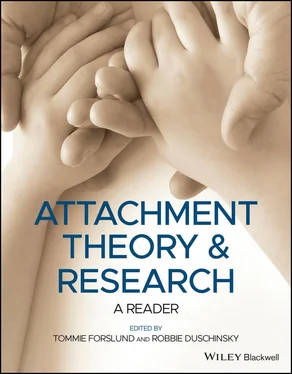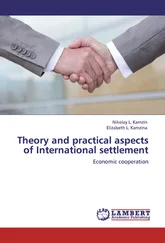An alternative genetic strategy is to provide a range of alternative creodes each suitable for one of a range of probable or potential environments and each tending to be the one followed when development happens to take place in that particular environment. An example is the capacity of a mammal’s immunological system to develop persisting responses appropriate to particular features met with in the environment. Whilst an increased epigenetic adaptability of this kind has obvious advantages there are limits to the variety of environments to which any one repertoire of creodes is adapted. Furthermore, every increase in species adaptability, by increasing developmental instability, is probably bought at the cost of greater risk that some individuals will develop along maladaptive lines. Examples from the field of immunology are liability to anaphylactic responses or those arising from rhesus incompatibility.
In ordinary language an individual (or species) endowed with a high degree of homeorhesis is regarded as ‘tough’. No matter what the environment (within limits) he seems to come through untouched. Conversely, an individual (or species) with low homeorhesis and high adaptability is regarded as ‘sensitive’. How he develops depends on the particular environment in which he grows up. The result may be high adaptedness to that environment but it may also lead to deviant development and low adaptedness.
In some species, development in an atypical environment, i.e. one markedly different from the species environment of evolutionary adaptedness, can result in an organism becoming adapted to that atypical environment. Such adaptedness can be achieved in a number of ways. Some entail a shift in one or other homeostatic parameter, others a shift in one or another homeorhetic pathway. Waddington gives as an example the several possible ways in which development at high altitude may result in an organism becoming adapted to living at low pressures of atmospheric oxygen:
by means of a shift in homeorhetic pathway, the area of lung alveoli is increased; this method permits both blood oxygen pressure and pulse rate to be maintained within usual homeostatic limits;
1 by means of a shift in one of these homeostatic measures, namely increasing heart‐rate, the other homeostatic measure, blood oxygen pressure, and also homeorhesis of lung development are permitted to remain unchanged;
2 by means of a shift in the other measure of homeostasis, namely reduction in blood oxygen pressure, other measures can remain unchanged, though energy output is reduced.
Because adaptedness to any particular environment is never absolute and may be purchased at some cost to homeostatic steady states or homeorhetic stable pathways, it is often not possible to make unitary judgments about what is healthy and what not. A main long‐term criterion, however, can always be applied, namely the degree to which any one solution contributes more or less successfully to species survival.
Every form of ill‐health, physiological and psychological, can (probably) be defined in terms of disturbances in one or another category of homeostasis or one or another category of homeorhesis, of a kind that temporarily or permanently impairs capacity for survival to some degree.
For example, physiological ill‐health can be defined:
either
1 as a disturbance in morphological or physiological homeostasis that temporarily or permanently impairs capacity for survival,
or
1 as a disturbance in morphological or physiological homeorhesis that temporarily or permanently impairs capacity for survival.
An example of (i) is measles. In the short run it can cause disturbances of various forms of physiological homeostasis. In the longer term the organism may become either better adapted (e.g. immune) or less well‐adapted (e.g. brain damaged), or both. In either case there is a permanent shift of developmental pathway.
An example of (ii) is rickets which causes disturbances of morphological homeorhesis in an unfavourable direction.
Not infrequently the acute phase of illness represents a disturbance of homeostasis, and the persistent sequelae a disturbance of homeorhesis. Rickets is one example. Another is a badly mended fracture that leads to disturbances of growth in other parts of the body.
So long as a disturbance of any of these kinds lasts, it is likely to be experienced as painful or uncomfortable, and as handicap.
It seems probable that all forms of psychological ill‐health can be defined in terms analogous to those applied to physiological ill‐health but with reference to personal‐environmental and representational homeostasis and homeorhesis.
For example the distress of separation or bereavement can be viewed as due to a disturbance of personal environmental homeostasis; delusions, hallucinations and thought disorder as constituting disturbances of representational homeostasis. Depression is usually associated especially with disturbance in representation of self.
The more chronic conditions can be viewed as disturbances of homeorhesis. Thus, phobias, addictions and sexual anomalies constitute disturbances in personal‐environmental homeorhesis. The same is true of psychopathic personality. Thought disorder constitutes a disturbance in representational homeorhesis.
Other forms of psychological ill‐health can be defined in a contrary way, namely, in terms of representational homeostasis that has been so rigid that necessary revision or working models of environment or of self are blocked. Examples are the various pathological variants of responses to loss.
It is not the purpose of this essay, however, to pursue matters of ill‐health further.
Disturbances of Homeostasis
Stress and stressors
When a steady state is disturbed, processes are elicited that tend to restore it. Usually they are successful, but sometimes they are not.
Success turns on the degree of disturbance and on the capacity of the organism to respond. When disturbance is of limited degree, restoration may be an easy routine matter. When disturbance is of greater degree (or the organism is functioning below par) restoration be may difficult: on the one hand, it may take longer to achieve and, on the other, mobilisation of processes usually held in reserve may be necessary to achieve it.
Failure to restore homeostasis leaves the organism permanently changed in lesser or greater degree. Provided death does not ensue, there is a permanent shift of one or more measures of homeostasis and so of the course of development. Such shifts can be advantageous for survival, either in the short or in the long run. Others are disadvantageous. Because several different changes may occur following a single disturbance, some of the changes may be advantageous whilst others are disadvantageous; and it may then be difficult to determine where the balance lies.
In physiology the term ‘stress’ is used to refer to the state of an organism when some measure of homeostasis is disturbed in some degree and processes are elicited that have as their predictable outcome restoration of whatever steady state has been disturbed. A difficulty usually arises, however, because the degree of disturbance to which the term ‘stress’ is applied by different workers varies greatly.
At least four different usages can be discerned. Starting with the broadest, they are:
1 any disturbance of homeostasis, no matter how trivial or routine;
1 disturbances of such degree that homeostasis can be restored only by mobilising processes usually held in reserve;
2 disturbances of such degree that homeostasis is not fully restored and the course of development is changed;
3 as in (c) but restricted to disturbances following which the course of development is changed for the worse.
Читать дальше












